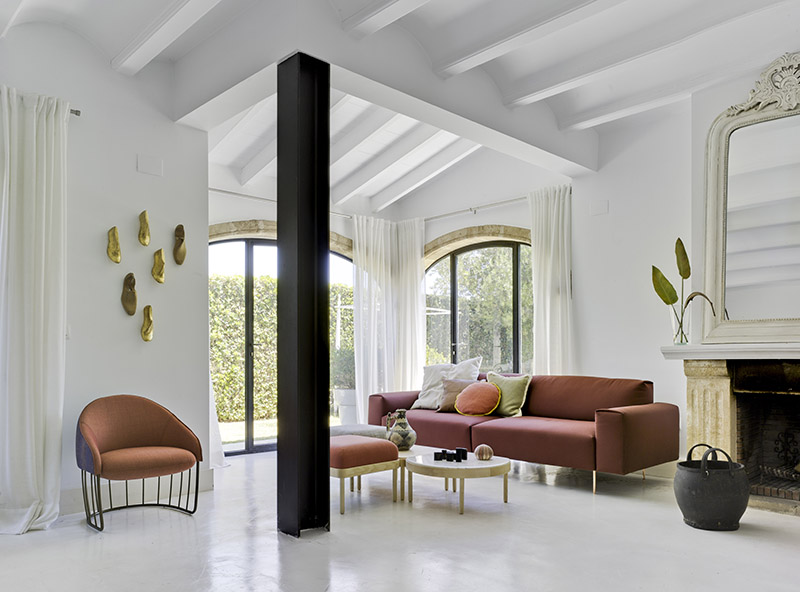New World Style and Old World Charm: How to Cohesively Mix the Two
 A lot of people look at an unfurnished space and find the idea of filling it with furniture and accessories quite daunting. Some people find it hard to envision exactly what they want in an interior, while others are overwhelmed by the opinions of others who share the space but don’t want to participate in the decoration of it. Sometimes you have pieces you already love, but are envisioning new styles to match your new space.
Well, the reality is that you don’t have to match everything in your space. In fact, it’s become quite a trend to mix and match different styles, eras, and forms in an interior. So if you’ve got some older vintage pieces and have your eye on some more modern furnishings, fear not, you’ve stumbled upon a theme that will be modern, sophisticated, and elegant.
One of the biggest issues with sticking to one style or era is that it’s usually tied to a specific trend or period. As a result, your look can become dated very quickly, forcing you to redecorate a lot sooner than anticipated. The advantage of mixing and matching old and new pieces is that it provides a timeless look and feel, and allows you to change pieces at whim without having to redo an entire room. The key behind mixing and matching old and new styles is to do it tastefully. Here are some tips to help you achieve a cohesive space when incorporating old and new pieces.
A lot of people look at an unfurnished space and find the idea of filling it with furniture and accessories quite daunting. Some people find it hard to envision exactly what they want in an interior, while others are overwhelmed by the opinions of others who share the space but don’t want to participate in the decoration of it. Sometimes you have pieces you already love, but are envisioning new styles to match your new space.
Well, the reality is that you don’t have to match everything in your space. In fact, it’s become quite a trend to mix and match different styles, eras, and forms in an interior. So if you’ve got some older vintage pieces and have your eye on some more modern furnishings, fear not, you’ve stumbled upon a theme that will be modern, sophisticated, and elegant.
One of the biggest issues with sticking to one style or era is that it’s usually tied to a specific trend or period. As a result, your look can become dated very quickly, forcing you to redecorate a lot sooner than anticipated. The advantage of mixing and matching old and new pieces is that it provides a timeless look and feel, and allows you to change pieces at whim without having to redo an entire room. The key behind mixing and matching old and new styles is to do it tastefully. Here are some tips to help you achieve a cohesive space when incorporating old and new pieces.
Find commonalities through a pattern or colour scheme
The easiest way to seamlessly mix old and new is to use patterns that share a common colour. If patterns share the same colour (or variations of the same colour), it makes it easier to mesh different styles and patterns together. This doesn’t mean that you have to stick to a single colour, but you also don’t want to use ten either. Use patterns that are similar, or at least complement each other well. If you’re going with geometric shapes, for example, then patterns using straight, jagged lines will complement one another. This unifies the look, regardless of how old or new the pieces are. Mixing different sizes of pattern motifs can also help to add depth and variety to a room.Use pieces in unexpected ways
If you have heirlooms or other vintage pieces that you don’t want to part with but don’t seem to have a use for, get creative! Let’s take a beautiful vintage dresser, for example. You don’t have to use it in your bedroom. Why not use it in your entrance or living area as a media centre? Or if the height is a little too tall, why not place it in the kitchen or dining area as a buffet? The same rule applies to smaller items. Not sure what to do with that antique teapot you found in Istanbul? Why not showcase it on a mantel and use it as a flower pot? Mixing old and new is an excuse to get creative and use objects for purposes other than what they were intended - so have some fun and see what works!Cluster pieces in odd numbers
While this tip may sound strange, studies have shown that our brain finds things arranged in odd numbers to be more visually appealing. It’s been said that groupings of three in particular tend to have this desired effect. Using an odd number forces a person’s eyes to move around the room more, heightening the visual experience and making it more memorable. It also adds an eclectic element to a space, boding well with the mix of old and new styles.Use oversized pieces to make a room appear larger
Contrary to popular belief, using larger furniture pieces won’t make your living space look smaller. People usually gravitate towards smaller pieces as they think they’ll be able to fit more into a room. In reality, all this does is make a space look cramped and cluttered. This would be the perfect opportunity to mix an oversized sofa - vintage or modern - and accent it with smaller pieces from contrasting eras.
Google’s San Francisco office pays homage to the city’s history with some vintage pieces alongside contemporary furniture - Ke-Zu

